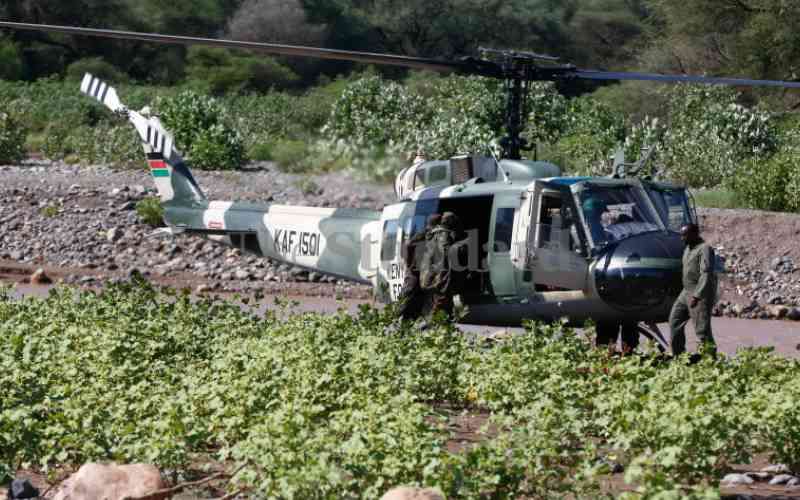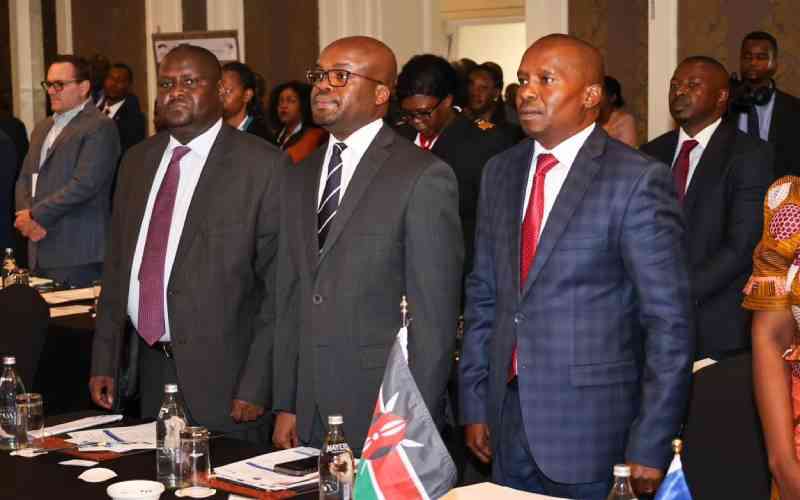I must start by acknowledging the candid discussion on the issue “terrorism, radicalisation and violent extremism” by Dominic Ruto Pkalya in The Standard on August 1. This presents a rare analysis on the topic of terrorism in Kenya – which is quite complex. My rejoinder is however limited to the concrete arguments he made in the article.
He noted that on July 10, President Uhuru reported (to the conference on Counterterrorism) that all the 47 counties have developed the County Action Plans (CAPs) on preventing violent extremism, as a major step to prevent violent extremism. This is an excellent idea but until we define ‘terrorism in our own context’ the action plans just remain to be another budget in futility. It is important to conceptualise the actual meaning of violent extremism without overlying on the Western ideological definitions that are equally contestable.
In this regard I call on Kenyans to think through possible terrorists we have in Kenya today. First, is the emergence of ‘economic terrorism.’ At international level, Iran and US continue to accuse each other of being economic terrorists, based on the politics of ‘nuclear weapons’ and the ‘sanction on oil supply.’ Closer home, on May 15, 2003, British Airways announced a travel ban to Kenya – citing terrorism threat. While the travel ban was in effect, the same British Airways announced their first flight to Baghdad, the epicenter of the ‘American War on Terror’ at the time.
Economic terrorism at play. Now domestically, we may find worse economic terrorists. A few individuals have been accused of stealing Sh63 billion. In other cases, county chiefs have also stolen money meant for development projects of ‘their own people.’ As if that is not enough, some border security officers are blamed for accepting bribes to allow dangerous foreigners into Kenya. And then media reports that the Akashas told the US court how they traded guns with the Al Shabaab. These actions have led to the deaths of millions of Kenyans from hunger, disease and stress, more than those claimed by the Al Shabaab over the years.
Then comes the ‘academic terrorists’ who are also all over the country. Due to a poor education system, all capacity systems of a country will collapse. Think about it. How did someone hack the examination system, almost a decade ago, so that more youths could score As, to increase university enrollment, and make money through parallel programmes. It’s also appalling how universities award ‘flawed degrees’. To what extent does this destroy our country? Don’t you think this could be a form of terrorism that needs to be taken into the CAPs?
As if that is not enough, we come to think about the agencies entrusted to enforce and keep law and order who decide to instead kill their suspects. Such deaths have been branded as extrajudicial killings, excessive force by the government, full force of the law, and occasionally criminal elements within the security sector. Does this manifest into State terrorism?
Finally we have the universal terrorist – the notorious Al Shabaab – who kills Kenyans at will. What we need to ask is why the Al Shabaab targets Kenya more than other frontline states such as Ethiopia, Eritrea, Sudan and even Uganda all of which are equally close to Somalia. The challenge in understanding terrorism therefore remains complex within the context of our country. But we must come up with a local meaning and clear understanding of what constitutes terrorism before we can purport to devolve the CAPs to prevent terrorism. More urgently, to tackle terror cells in Kenya, we have to address high levels of corruption, deteriorating education standards and the security system.
- The writer is a University of Otago scholar of Peace and Conflict studies, and former CEO PeaceNet Kenya
 The Standard Group Plc is a
multi-media organization with investments in media platforms spanning newspaper
print operations, television, radio broadcasting, digital and online services. The
Standard Group is recognized as a leading multi-media house in Kenya with a key
influence in matters of national and international interest.
The Standard Group Plc is a
multi-media organization with investments in media platforms spanning newspaper
print operations, television, radio broadcasting, digital and online services. The
Standard Group is recognized as a leading multi-media house in Kenya with a key
influence in matters of national and international interest.
 The Standard Group Plc is a
multi-media organization with investments in media platforms spanning newspaper
print operations, television, radio broadcasting, digital and online services. The
Standard Group is recognized as a leading multi-media house in Kenya with a key
influence in matters of national and international interest.
The Standard Group Plc is a
multi-media organization with investments in media platforms spanning newspaper
print operations, television, radio broadcasting, digital and online services. The
Standard Group is recognized as a leading multi-media house in Kenya with a key
influence in matters of national and international interest.









